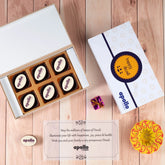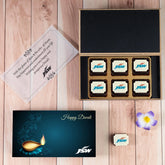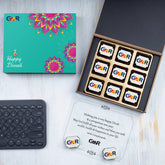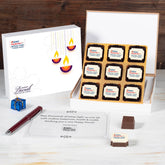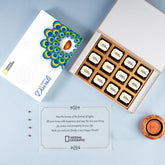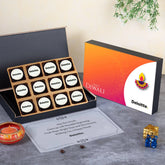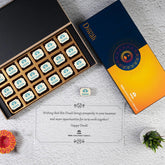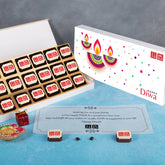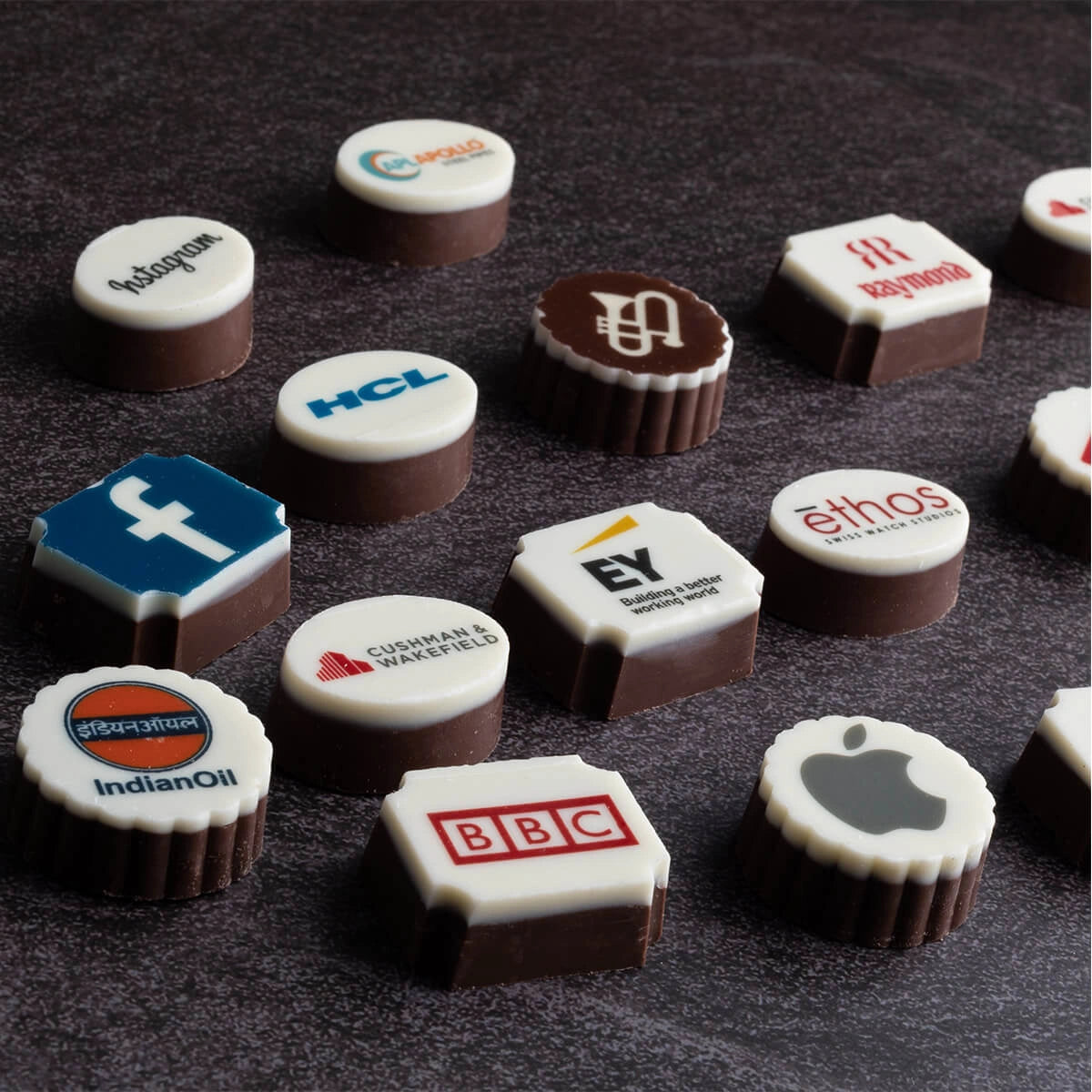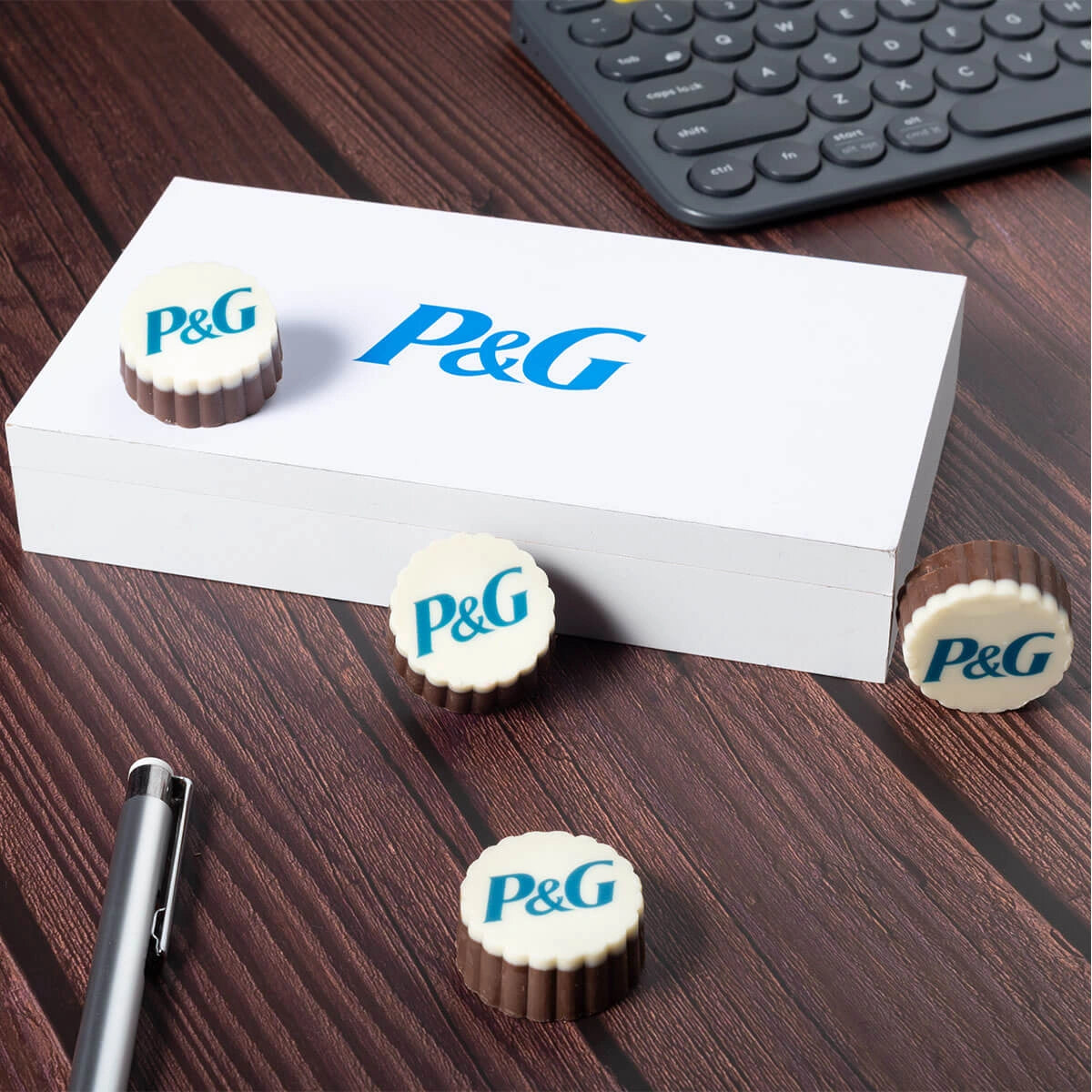High-Value vs Low-Cost Items: Finding the Sweet Spot for ROI
High-Value vs Low-Cost Items: Finding the Sweet Spot for ROI
Explore Corporate Gifting
Key Takeaways
- The ROI of a giveaway depends more on relevance and perceived value than just cost.
- High-value gifts like printed chocolates create stronger emotional connections and long-term brand recall.
- Low-cost items can work if they’re useful, creatively branded, and audience-appropriate.
- Tracking metrics like lead quality, conversion rate, and brand recall is critical to optimising your gifting strategy.
- Brands should use a tiered approach—premium for high-value targets, low-cost for wider distribution.
Trade shows, festivals, and corporate events are more than just gatherings—they're opportunities. Every HR manager, marketing head, admin lead, or CEO looking to boost their brand knows that giveaways can be powerful tools. But here's the real challenge: Should you invest in high-value items that dazzle or stick to low-cost items that go the distance? Finding the sweet spot between cost and impact is where the real ROI lies.
In this blog, we’ll help you strike that perfect balance through expert-backed insights, case examples, and a detailed cost-benefit analysis. If you're planning your corporate giveaways or considering your next expo gifting strategy, read on.
---------------------------------------------------------------------------------
Why Giveaways Matter for ROI
According to a 2024 study by ASI, 85% of people remember the brand behind a promotional item they’ve received. Giveaways not only create a lasting impression, but they also offer one of the lowest cost-per-impression (CPI) rates in marketing. That’s especially true when the item is functional, memorable, or shareable.
In India, the promotional products industry is growing rapidly, pegged at over USD 1.2 billion. As businesses increasingly focus on long-term customer engagement and employee retention, corporate gifting is no longer a seasonal gesture—it's a strategic investment.
Platforms like ChocoCraft, which offer personalised printed chocolates in keepsake boxes, are redefining what a 'high-value giveaway' can look like—especially in B2B contexts.
Build a gifting experience—combine logo chocolates with festive hampers for maximum impact. Read more →
---------------------------------------------------------------------------------
Psychological Impact of Gifting: Why Emotions Drive ROI
We often underestimate the emotional value of a gift. Yet, psychology tells us that emotional resonance increases memory retention. When you hand someone a box of customised chocolates with their name or logo on it, you’re not just giving a sweet treat—you’re crafting a moment.
According to behavioural economics, people are more likely to respond favourably to gestures that feel personalised. It triggers a feeling of reciprocity. In business, that can mean faster follow-ups, stronger loyalty, or even better negotiation outcomes. That’s why a ₹350 customised gift can outperform a ₹50 pen in ROI—even if the pen reaches five times more people.
Low-cost items rarely produce this level of emotional lift unless they’re highly creative or situationally relevant. A branded hand fan at a summer expo may be cheap but feels thoughtful. Likewise, printed chocolates during Diwali tap into cultural sentiments, making them naturally more impactful.
The takeaway? Emotions drive recall. And recall drives ROI.
Premium Corporate Gifts with Logo Chocolates
Make a lasting impression on clients and employees with personalized chocolate gift boxes that reflect your brand.
Explore Now
---------------------------------------------------------------------------------
Understanding High-Value Giveaways
High-value giveaways are premium, thoughtfully designed items that offer a strong visual and emotional impact. These gifts are often:
- Personalised (e.g. with logos, names, or messages)
- Presented in premium packaging (wooden boxes, luxury wraps)
- Useful and long-lasting (power banks, planners, gourmet items)
Pros:
- High perceived value enhances brand recall
- Great for key clients, decision-makers, or top employees
- Perfect for festive gifting (see Modern Diwali Gifts for Employees)
Cons:
- Higher upfront cost
- Limited scalability
- Risky if targeting a broad, unfamiliar audience
Example:
A customised 18-chocolate box from ChocoCraft featuring your logo can cost more than standard giveaways—but it leaves a luxurious, lasting impression.
---------------------------------------------------------------------------------
Real Case Study: Premium Gifts That Closed the Deal
A leading fintech firm participating in a Mumbai expo chose ChocoCraft’s personalised chocolate boxes instead of traditional branded pens. Each chocolate had the firm’s logo, and the box featured the recipient’s company name—a masterstroke in personalisation.
Out of 120 boxes distributed to targeted decision-makers:
-
38 led to meetings within 2 weeks
-
10 converted to paid pilot programs
-
4 turned into long-term retainer deals
What was the cost? Roughly ₹48,000 in gifting. The resulting business? Over ₹25 lakh in revenue over 12 months.
Compare that to a previous year when the same brand used keychains and saw just 3 meetings post-event.
The personalised chocolate gift didn’t just stand out—it opened doors, started conversations, and triggered emotional connections that generic swag could never achieve.
The takeaway: High-value doesn’t just mean high cost. It means high relevance, high emotion, and high intent.
---------------------------------------------------------------------------------
Low-Cost Giveaways: Budget-Friendly Impact
Low-cost giveaways are usually generic but practical. Think pens, tote bags, notepads, or badges. These are best used when reach is more important than retention.
Pros:
- Inexpensive and scalable
- Easy to distribute in bulk at expos or recruitment drives
- Lower risk in terms of investment
Cons:
- Lower recall value
- Often considered disposable
- Less differentiation from competitors
However, not all budget giveaways are ineffective. Items like eco-friendly tote bags or well-designed stationery can still offer excellent branding ROI when used strategically.
Branded Corporate Gift Box
Custom-branded chocolates tailored to showcase your company identity perfectly.
Customize Yours
---------------------------------------------------------------------------------
Hidden Costs of Low-Cost Giveaways
Low-cost giveaways look great on paper—until you account for the hidden costs. First, there’s the volume inflation. You need thousands of units to make an impact, which means higher storage, packaging, and transport logistics.
Second, there’s brand dilution risk. If your gift feels cheap or irrelevant, it doesn’t just fail—it may hurt your brand image. Recipients may associate your company with being low-effort or unprofessional.
Third, there’s wastage. At events, it’s common to see low-cost items left behind on tables, dropped in hallways, or tossed in bins. That’s wasted money and marketing opportunity.
Finally, low-cost giveaways usually offer poor targeting. They’re mass-distributed, which means your message may not reach the decision-makers or high-value leads you’re hoping to impress.
In contrast, high-value giveaways are more deliberate. Even if fewer are distributed, each unit is strategically placed. That focused investment often brings better returns—especially when aligned with a CRM-based targeting plan.
Select an agency that offers full customization, mockup previews, and reliable delivery. Read more →
---------------------------------------------------------------------------------
Cost-Benefit Analysis: The Right Approach
ROI isn’t just about cost. It’s about value.
Here’s how to analyse your giveaway options:
1. Total Cost Involved
Include:
- Product cost
- Packaging
- Shipping & logistics
- Personalisation cost (if any)
2. Reach & Impressions
Ask:
- How many people will use or see this?
- Will it be used daily (e.g., a pen) or stored as a keepsake (e.g., chocolate box)?
3. Brand Recall Potential
Consider:
- Will they remember your brand after a week, month, or six months?
-
Premium chocolates with logos or photos ensure higher memory retention.
4. Business Relevance
- Is the item aligned with your brand tone?
- Is it suitable for the receiver’s context?
5. Conversion Impact
- Did it lead to a sale, meeting, or repeat business?
Refer to this guide on promotional effectiveness to go deeper into cost measurement.
---------------------------------------------------------------------------------
Finding the Sweet Spot: Hybrid Strategies
Sometimes, the best approach is neither high nor low—it’s hybrid.
Tiered Gifting
Use different gifts for different tiers of clients or employees. For example:
- VIP Clients: Premium 12-chocolate gift box
- Mid-level Clients: 6-chocolate box
- Broad Audience: Branded bookmarks or notepads
Read: Pre-Diwali Occasions: Tiered Gifting Strategies
Occasion-Driven Gifts
Plan ahead for key events like Navratri or Durga Puja. Use high-value gifts during festivals and low-cost ones for follow-ups.
Explore:
---------------------------------------------------------------------------------
Brand Fit is Non-Negotiable
Never chase trends blindly. A quirky, low-cost keychain might work for a youth brand but feels off-brand for a luxury real estate firm. Every giveaway must reflect your:
- Brand values
- Target audience
- Message you want to communicate
For instance, ChocoCraft offers custom chocolate boxes with your logo, message, or product photo printed directly on the chocolate—making your brand literally unforgettable.
Such personalised touches show attention to detail, premium positioning, and client care. This emotional connect significantly enhances long-term recall and engagement—something low-cost giveaways often miss.
Compare vendors by product range, customization, logistics, and feedback before choosing. Read more →
---------------------------------------------------------------------------------
Measuring ROI: Tools & Metrics
You can’t improve what you don’t measure. Here’s how to track ROI on giveaways:
- Lead Quality Uplift: Did gifting lead to better-qualified leads?
- Engagement Rate: Track post-gift communication, meeting setups, conversions.
- Cost per Conversion: Compare gift cost to actual sales closed or meetings booked.
- Long-Term Recall: Run a recall survey after 3-6 months.
Want a hands-on guide? Use our Giveaway ROI Calculator Guide.
---------------------------------------------------------------------------------
Planning Ahead: Budgeting for 2026 Gifting Strategies
With 2026 fast approaching, brands that plan ahead for gifting will win. But what does smart planning look like?
Start by forecasting your major events—expos, festivals, employee milestones, and client outreach windows. Use tools like ChocoCraft’s Giveaway ROI Calculator to project costs, impressions, and conversion potential.
Next, segment your audience. Allocate 50% of your gifting budget for high-intent, high-value targets. These could be top clients, vendors, or internal leaders. Use the remaining 50% for low-cost, wide-reach items that boost awareness and visibility.
Also, pre-order your gifts—especially for festivals like Diwali, Navratri, or New Year. Early planning not only helps with customisation but also cuts rush fees and shipping delays.
Pro tip: Keep 10–15% of your gifting inventory flexible for last-minute opportunities, like an unexpected partnership or a sudden PR event.
By integrating gifting into your annual marketing calendar instead of treating it as an afterthought, you’ll unlock consistent, measurable ROI—without burning through budget last minute.
6 Logo Chocolates Gift Box
Premium handcrafted chocolates with your company logo for exclusive gifting.
Order Now---------------------------------------------------------------------------------
Conclusion: ROI Comes from Relevance, Not Just Rupees
High-value doesn’t always mean expensive. Low-cost doesn’t always mean low impact. The most effective giveaways balance:
- Perceived value
- Brand fit
- Client segment
- Measurable ROI
At ChocoCraft, we help companies craft personalised, premium giveaways that hit all the right notes—without breaking the budget. Whether you’re planning for an expo, Diwali campaign, or client outreach, reach out to our team for guidance on finding your sweet spot.
Your next best client connection may start with the right chocolate box.
---------------------------------------------------------------------------------
Key Information
| Criteria | High-Value Giveaways | Low-Cost Giveaways |
|---|---|---|
| Perceived Value | High, often evokes emotional connection | Moderate, depends on utility and relevance |
| Ideal Use Case | Client retention, premium lead engagement | Mass awareness, general event giveaways |
| Customization | Highly personalized (e.g. ChocoCraft chocolates) | Limited personalization (e.g. logos on pens) |
| Cost | ₹250–₹1000+ per item | ₹10–₹150 per item |
| Brand Impact | Long-lasting, enhances brand prestige | Short-term, risks being forgettable |
| ROI Measurement | Via lead quality, conversion uplift, recall | Via volume reach, social media engagement |
| Emotional Value | High – triggers gratitude and loyalty | Low – often seen as generic or disposable |
| Distribution Target | Decision-makers, high-potential clients | Visitors, prospects, general audience |
---------------------------------------------------------------------------------
FAQs
1. What defines a high-value giveaway?
High-value giveaways are items that have high perceived value and emotional impact. These may be expensive (like tech gadgets) or cost-effective (like customised chocolates) but offer strong brand recall and utility.
2. Can low-cost items generate good ROI?
Yes. Low-cost items like pens, bookmarks, or QR cards can work well if they're well-designed, useful, and contextually relevant to your audience.
3. What’s the ideal budget split for giveaways?
Experts recommend allocating 10–20% of your marketing or event budget to gifting, depending on the campaign goal and target audience tier.
4. Are printed chocolates really effective as giveaways?
Absolutely. Personalised chocolates offer novelty, emotional engagement, and shareability—great for brand recall and Instagram-worthy moments.
5. How do I measure the ROI of a giveaway?
Track lead conversions, cost-per-lead, and engagement uplift post-distribution. Use a Giveaway ROI Calculator for clarity.
6. Should I use different giveaways for different clients?
Yes. Tiered gifting strategies work best—reserving premium items for high-value clients and simpler items for broader reach.
7. What is perceived value in giveaways?
Perceived value is how the recipient emotionally and psychologically values the item—not just its market cost. Customisation boosts this significantly.
8. Can QR codes help track gift engagement?
Yes. Adding QR codes to your gifts can help track click-throughs, engagement, and conversions.
9. When should I choose low-cost items?
For mass distribution or early-funnel engagement where brand awareness is the primary goal, low-cost items are sufficient and scalable.
10. What mistakes should I avoid when selecting giveaways?
Avoid poor quality, brand misalignment, overstocking, and items without utility. They waste budget and hurt brand image.
Need help choosing the right giveaway for your next campaign? Contact ChocoCraft for expert gifting strategies.

Author Bio
The blog is written and compiled by Saurabh Mittal and his team using intelligent tools.
Entrepreneur Saurabh Mittal founded ChocoCraft where they print your logo, message, or photo on premium chocolate which are presented in an elegant custom wooden box with a message for the recipient. Since 2013, ChocoCraft has worked with 2,500+ companies with logo chocolate gifts for occasions like Diwali, client outreach, onboarding, milestone events, and global campaigns. The brand’s reach also extends to over 1,00,000 B2C customers across India, who choose ChocoCraft to celebrate life’s personal moments like Birthdays, Anniversaries, Rakshabandhan and others. Read more about us ›
